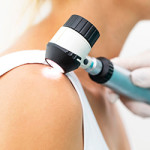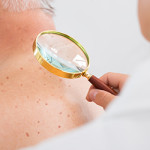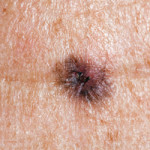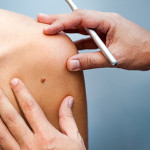Cosmetic Surgery Blog
Military Personnel at Greater Risk for Skin Cancer

Both active duty and veteran military personnel have a greater risk of both melanoma and none melanoma skin cancer compared with the civilian population.
Air Force seemed to be the highest risk as well as those who served in the tropics or who were prisoners of war. If you are or have been in the military, look after your skin, use sunscreen and get regular skin cancer screening exams.
Article citation
Journal of the American Academy of Dermatology
Skin Cancer in the Military: A Systematic Review of Melanoma and Non-Melanoma Skin Cancer Incidence, Prevention, and Screening Among Active Duty and Veteran Personnel
J Am Acad Dermatol 2017 Dec 29;[EPub Ahead of Print], K Riemenschneider, J Liu, JG Powers
The Importance of Time from Diagnosis to Treatment in Melanoma

A diagnosis of cancer is always worrying and stressful. Patients will generally feel an need for urgent treatment just to get rid of it as soon as possible. For many skin cancers such urgency is not vital, however a new study from the Cleveland Clinic suggests that for melanoma, treatment should be within 30 days of diagnosis. Patients with a newly diagnosed melanoma who had treatment delayed beyond 30 days did not have has high a survival rate. Here are the numbers:
Compared to patients who were treated within 30 days, patients with stage I melanoma were:
- 5 percent more likely to die when treated between 30 and 59 days (95% CI 1.01-1.1; P = 0.029);
- 16 percent more likely to die when treated between 60 and 89 days (95% CI 1.07-1.25; P > 0.001);
- 29 percent more likely to die when treated between 91 and 120 days (95% CI 1.12-1.48; P > 0.001); and
- 41 percent more likely to die when treated after 120 days (95% CI 1.21-1.65; P > 0.001).
Melanoma is important to diagnose early and treat quickly once it is found.
Article Citation
Journal of the American Academy of Dermatology
January 2018Volume 78, Issue 1, Pages 40–46.e7
Determination of the impact of melanoma surgical timing on survival using the National Cancer Database
Ruzica Z. Conic, MD, Claudia I. Cabrera, MD, Alok A. Khorana, MD, Brian R. Gastman, MDCorrespondence information about the author MD Brian R. Gastman
Facial Workout

A small pilot study suggests that daily facial exercises may make you look younger.
In this study 27 women aged 40 to 65 were given an exercise regimen for their facial muscles that they were to do every day for a total of 20 weeks. Of the 27 who started only 16 completed the program, but those women who completed it were judged to look an average of 3 years younger than they did before they started. Which of the exercises were responsible for the improvement and whether the results can be duplicated in a lager controlled study is yet to be determined. None the less its interesting to think how in a search for a more youthful appearance we might end up trying to avoid wrinkles, by paralyzing muscles with Botox and at the same time building up other muscles through facial exercises to keep a younger looking fuller face!
Article Citation:
Association of Facial Exercise With the Appearance of Aging
Murad Alam, MD, MSCI, MBA1,2,3; Anne J. Walter, MD, MBA1,7; Amelia Geisler, BS1; et alWanjarus Roongpisuthipong, MD1,4; Gary Sikorski5; Rebecca Tung, MD6; Emily Poon, PhD1
JAMA Dermatol. Published online January 3, 2018. doi:10.1001/jamadermatol.2017.5142
Mohs for the Elderly

A retrospective review of 488 patients aged 85 or older presenting for nonmelanoma skin cancer management was performed (1999–2014). Patients undergoing Mohs micrographic surgery (MMS) had a mean age of death of 93.5 years (older than the national average of 76.1 and 81.2 years, males and females, respectively). Patients who underwent MMS survived a median of 20 months longer than those who elected not to have treatment for their skin cancer. The authors suggest that age and comorbidities alone are inadequate for making skin cancer treatment decisions in this population. Take home message, you still deserve Mohs, even if you are older!
Citation
Journal of the American Academy of Dermatology
Comorbidity Scores Associated With Limited Life Expectancy in the Very Elderly With Nonmelanoma Skin Cancer
J Am Acad Dermatol 2017 Dec 26;[EPub Ahead of Print], EM Rogers, KL Connolly, KS Nehal, SW Dusza, AM Rossi, E Lee
Diabetic Medication May Protect Against Skin Cancer

A recent study from Taiwan suggests that diabetic patients who are treated with “metformin” had a lower risk of skin cancer than would have been expected. Further studies are needed to confirm and explain these findings but the authors suggest if you are diabetic and at high risk for skin cancer you should consider metformin as part of your diabetic treatment.
Citation
Journal of the American Academy of Dermatology
Metformin and Skin Cancer Risk in Taiwanese Patients With Type 2 Diabetes
J Am Acad Dermatol 2017 Dec 13;[EPub Ahead of Print], C-H Tseng
Young Women at Greatest Risk for Melanoma

Female gender is an independent risk factor for melanoma diagnosed under 44 years old. However after 45 years of age, there appears to be a protective role of female gender against UV-associated melanoma risk.
Where you live is also an important risk factor. The higher the Ultra-Violet Index (UVI) the greater the risk for melanoma.
So young women in sunny climates need to be especially vigilant!
Article Citation:
Journal of the American Academy of Dermatology
An Age-Dependent Interaction Between Sex and Geographical UV Index In Melanoma Risk
J Am Acad Dermatol 2017 Dec 01;[EPub Ahead of Print], F Liu-Smith, A Ziogas
Meds that keep your pressure down may be increasing your skin cancer risk!

One particular blood pressure medication has been shown to increased risk of both squamous and basal cell cancer. Long term use of Hydrochlorothiazide, (which is a diuretic commonly used to treat hypertension) has been shown to significantly increase your risk of skin cancer. No other anti-hypertensive medications showed the same association. If you are at high risk for skin cancer and are taking hydrochlorothiazide speak to your doctor to see if there may be a better alternative for you.
Citation
Journal of the American Academy of Dermatology
Hydrochlorothiazide Use and Risk of Non-Melanoma Skin Cancer: A Nationwide Case-Control Study From Denmark
J Am Acad Dermatol 2017 Nov 30;[EPub Ahead of Print], S Arnspang, D Gaist, SA Johannesdottir Schmidt, LR Hölmich, S Friis, A Pottegård
Its All In The Genes!!

Why do some people’s skin look younger? A molecular study of women of various ages suggests its all in the genes.The gene expression patterns of skin biopsies from the subset of women who were younger-appearing were similar to those in women who were actually younger. While older appearing women had more of the molecular and genetic changes that can be attributed to chronic environmental stress such as ultra violet light. So protect your skin and pick your parents carefully!
Journal of the American Academy of Dermatology
Age-Induced and Photoinduced Changes in Gene Expression Profiles in Facial Skin of Caucasian Females Across 6 Decades of Age
Education Helps!

A group if NCAA athletes were studied regarding sun protective practices, both before and after sun protection education to students, coaches and trainers. The student athletes increased their sun protective practices significantly. A little education now may have great benefits latter in life!
Journal of the American Academy of Dermatology
Promoting Sunscreen Use and Sun-Protective Practices in NCAA Athletes: Impact of SUNSPORT Educational Intervention for Student-Athletes, Athletic Trainers, and Coaches
Citation
J Am Acad Dermatol 2017 Oct 06;[EPub Ahead of Print], MS Ally, SM Swetter, KE Hirotsu, J Gordon, D Kim, A Wysong, L Donnelly, S Li, KM Nord
Beta Blockers may Reduce Risk of Melanoma Recurrence

New hope for patients with advanced metastatic melanoma.
A small study presented at the 2017 World Congress of Melanoma shows that a new immunotherapy can slow the progress of metastatic melanoma.
The researchers used tumor infiltrating lymphocytes (TILs) extracted from patients’ tumors, The cells are then genetically altered and rapidly grown in the lab, before being infused back into the patient.
There was evidence of some benefit from this new therapy in six of the seven patients with metastatic melanoma who had all previously received other cancer treatments.
The duration of response was not consistent across all patients who showed signs of stable disease. Overall, two patients showed signs of a persistent response, lasting longer than six months. For one of these patients, a consistent drop in tumor burden, which was close to 90 percent, was seen out to 17 months.
It seems that the future of cancer treatment lies in immune therapy. If your own body can attack the cancer that may give the most complete and long lasting cure of all.
Although only a small, none blinded study this recent publication seems to confirm the theory that oral beta blockers, usually used to treat high blood pressure, may decrease the risk of melanoma recurrence after surgical treatment. While large controlled double blinded studies will be needed to confirm these results, this very exciting news. Propanalol, the drug used in this study, is a cheap relatively safe medication that many people have taken for many years with any problems in the vast majority of cases. I wonder what other every day medications might have as yet unrecognized benefit in our fight against cancer.
